One of the indirect costs that contractors need to estimate when submitting a bid for a construction project is the cost associated with project finance and overdraft facilities. To be able to have a realistic assessment, the contractor must determine the fund’s inflow from the monthly progress invoices for approved work in place. This inflow should be adjusted for the project’s contract agreement including the provisions for advance payment, advance payment recovery, retention, retention release, and invoices payment terms. In addition, the contractor should determine the outflow of funds for his resources, material, and equipment procurement, the subcontracted scope of work, and others.
The issue in doing so is that for estimating the funds’ inflow, the projection should be aligned with the project’s bill of quantity or schedule of values which will be used for submitting the monthly interim payment certificate for approved work in place. On the other hand, for estimating the funds’ outflow, the projection should be aligned with the approved project budget which will be based on the approved project cost estimate. The inflow and outflow projections should be aligned with the project schedule which usually will be a level 2 project schedule.
A level 2 project schedule for construction projects is a summary schedule that provides an overview of the project’s major milestones and deliverables. It typically includes the project’s main phases, such as design, construction, and commissioning, and the key tasks and milestones associated with each phase. It also includes the overall project timeline, including the start and completion dates, and the major deliverables that will be produced along the way. Unlike a level 3 schedule, a level 2 schedule does not provide as much detail on the specific tasks and resources needed to complete the project, but it is useful for providing a high-level view of the project’s progress and for communicating the project’s status to stakeholders.
Using a Project Management Information System (PMIS) like PMWeb not only provides the data needed for estimating the cost associated with project finance and overdraft facilities but also ensures that all documents used in making this estimate are captured and enforce a formal process for reviewing and approving the final cost estimate for those expenses. To start with, the level 2 project schedule must be captured to ensure that the inflow and outflow cost projects are based on the same project delivery plan. The PMWeb scheduling module allows either creating the level 2 project schedule or importing the schedule from Primavera P6 or MS Project.
Similar to all other project management processes digitalized using the PMWeb Project Management Information System (PMIS), all supporting documents, links to relevant records, and imported MS Outlook emails will be added. In addition, a workflow with the required review and approval sequence as well as approval authority levels as detailed in the delegation of authority matrix will be assigned to the project schedule template. The same also applies to the revenue contract agreement, cost estimate, and budget templates.
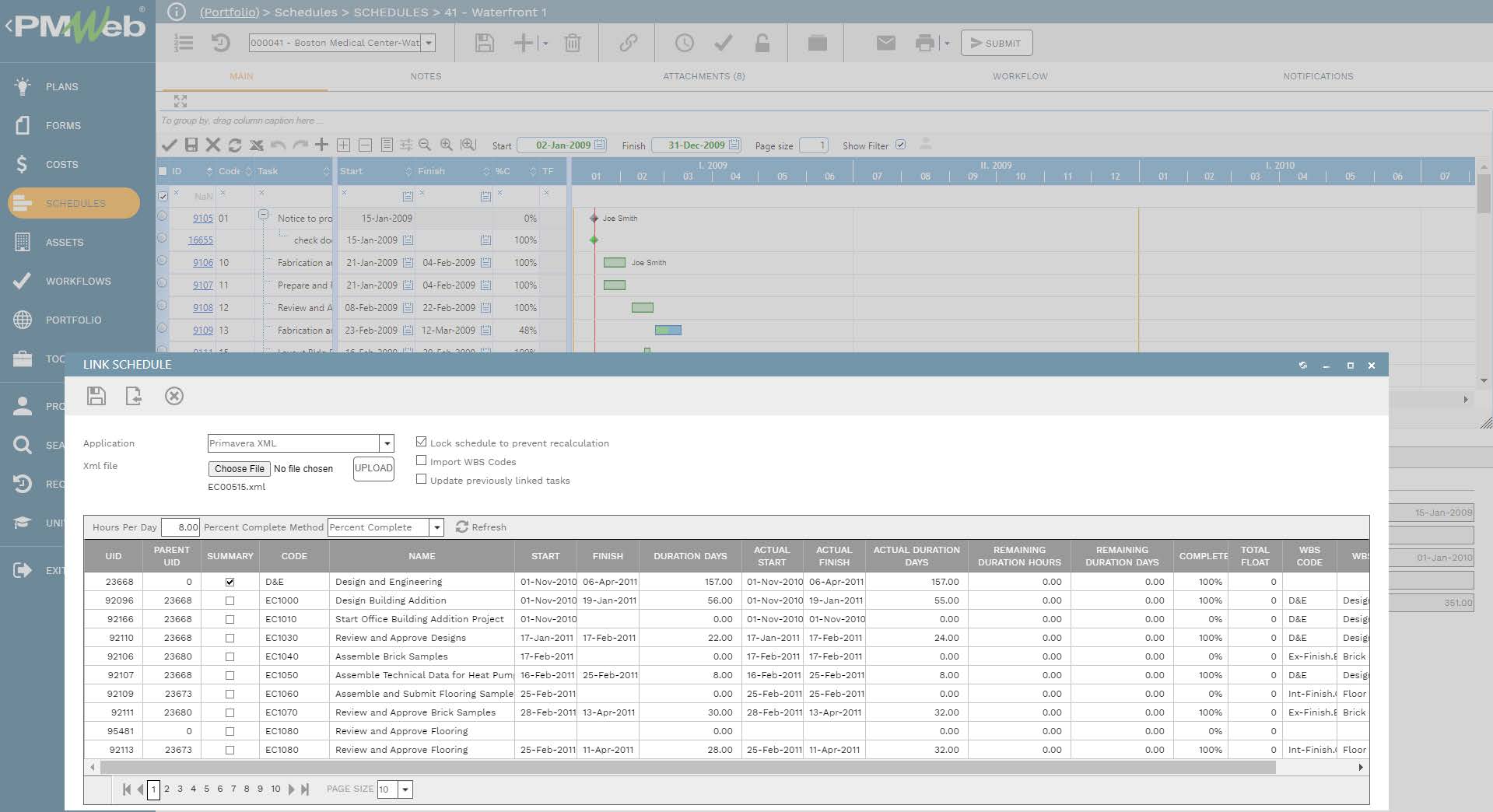
The next step is to capture the project’s outflow or revenue projection. The PMWeb Revenue Contract module will be used to upload the priced bill of quantity along with the project schedule activity that the bill of quantity items are assigned. PMWeb allows exporting the bill of quantity template to MS Excel so it can be populated with the Bill of Quantity line items and assigned project schedule activity.
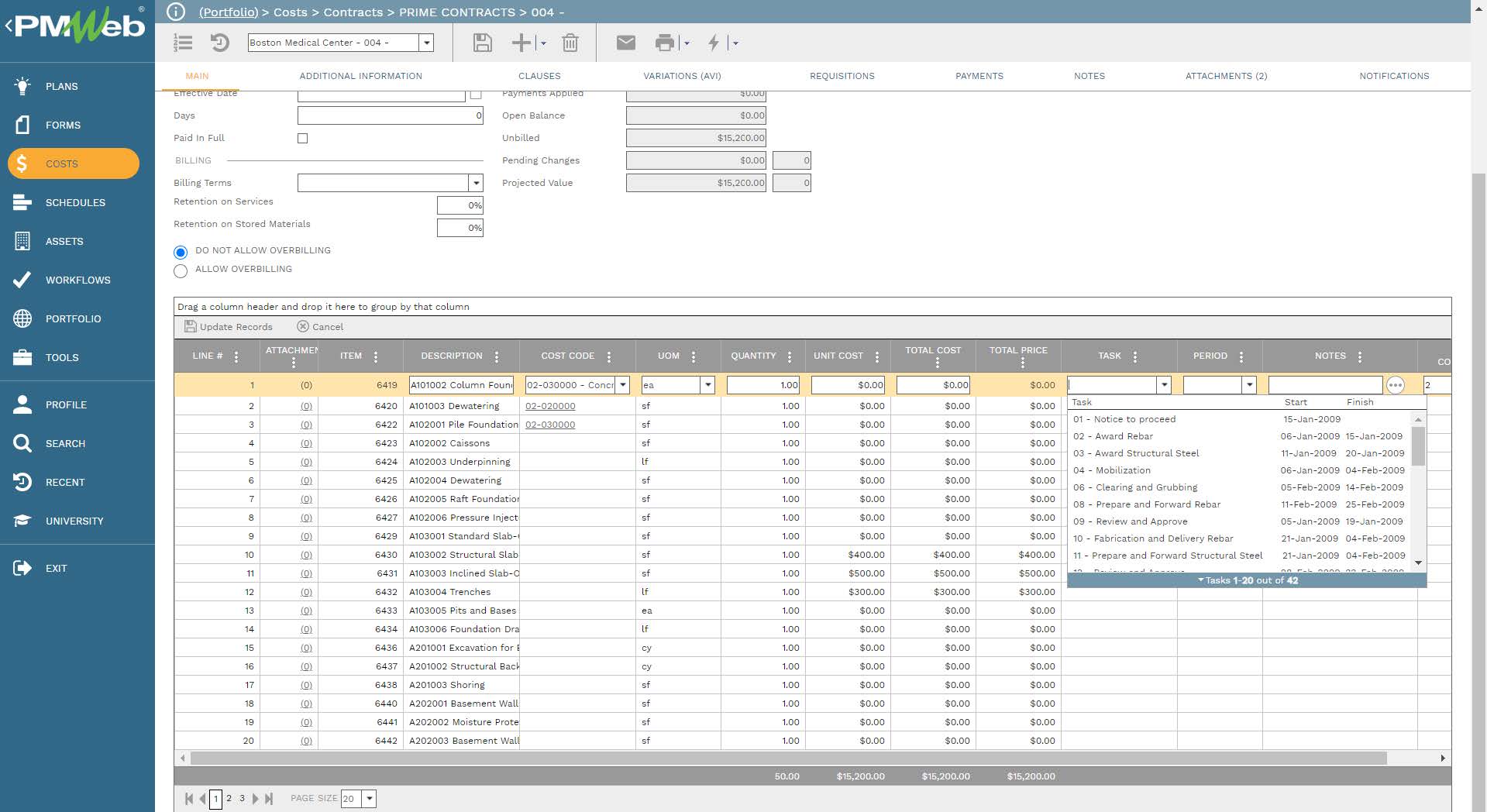
This will be followed by capturing the project’s inflow or cost projection. The PMWeb Cost Estimate module will be used to import the single or many cost estimate templates that the estimating team has developed using the cost estimate software application or MS Excel. The imported cost estimate also includes the project activity that the cost estimate items are assigned to. PMWeb allows exporting the bill of quantity template to MS Excel so it can be populated with the Bill of Quantity line items and assigned project schedule activity. The PMWeb cost estimate template allows multi-currency estimates as well as capturing all details associated with each cost estimate line item.
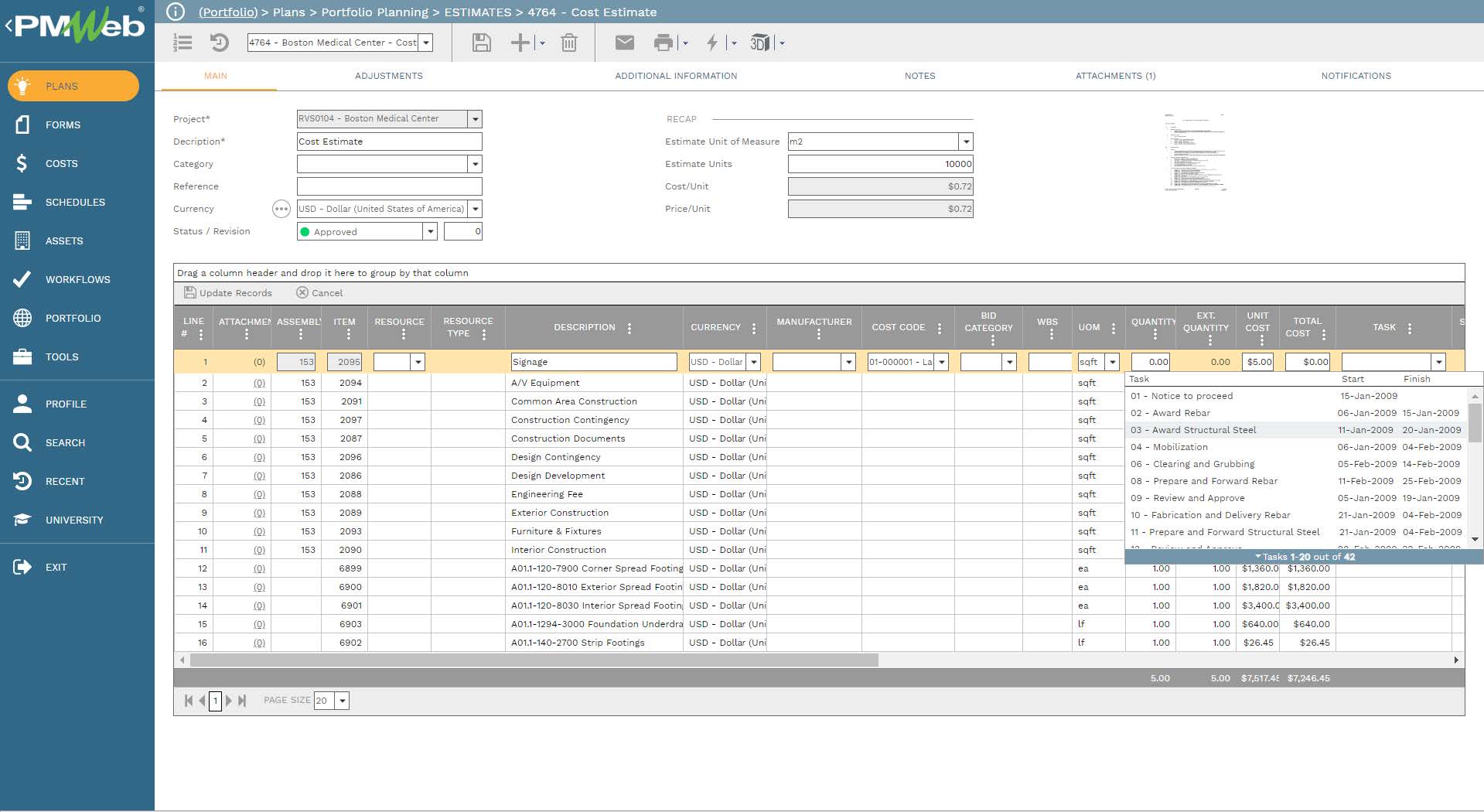
The data captured in the Revenue Contract and Cost Estimates templates provides the information needed to estimate the cost associated with project finance and overdraft facilities. The report has the formulas needed to adjust the inflow projection curve for the project’s contract agreement including the provisions for advance payment, advance payment recovery, retention, retention release, and invoices payment terms.
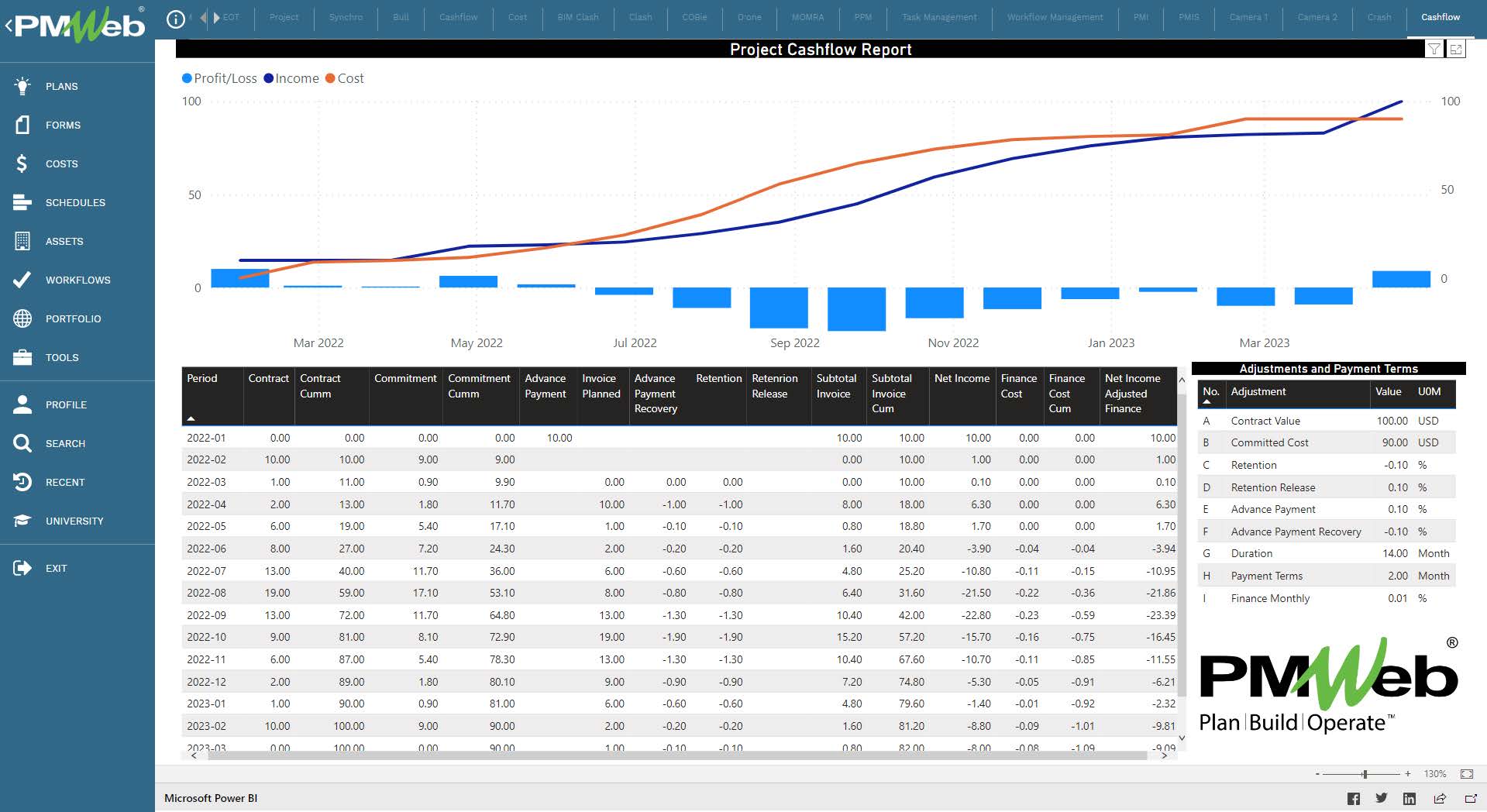
The calculated cost associated with project finance and overdraft facilities then gets added to the project’s baseline budget. This direct cost for the baseline budget automatically generates from the approved cost estimate templates imported to PMWeb. The cost estimate line items will be grouped by the cost breakdown structure (CBS) levels defined by the contractor to manage the project cost. In addition, each budget line item will be assigned the project schedule activity that reflects the start and finish dates of the budget line item. The project budget will be the process that the contractor should formally review and approve before submitting the bid proposal.
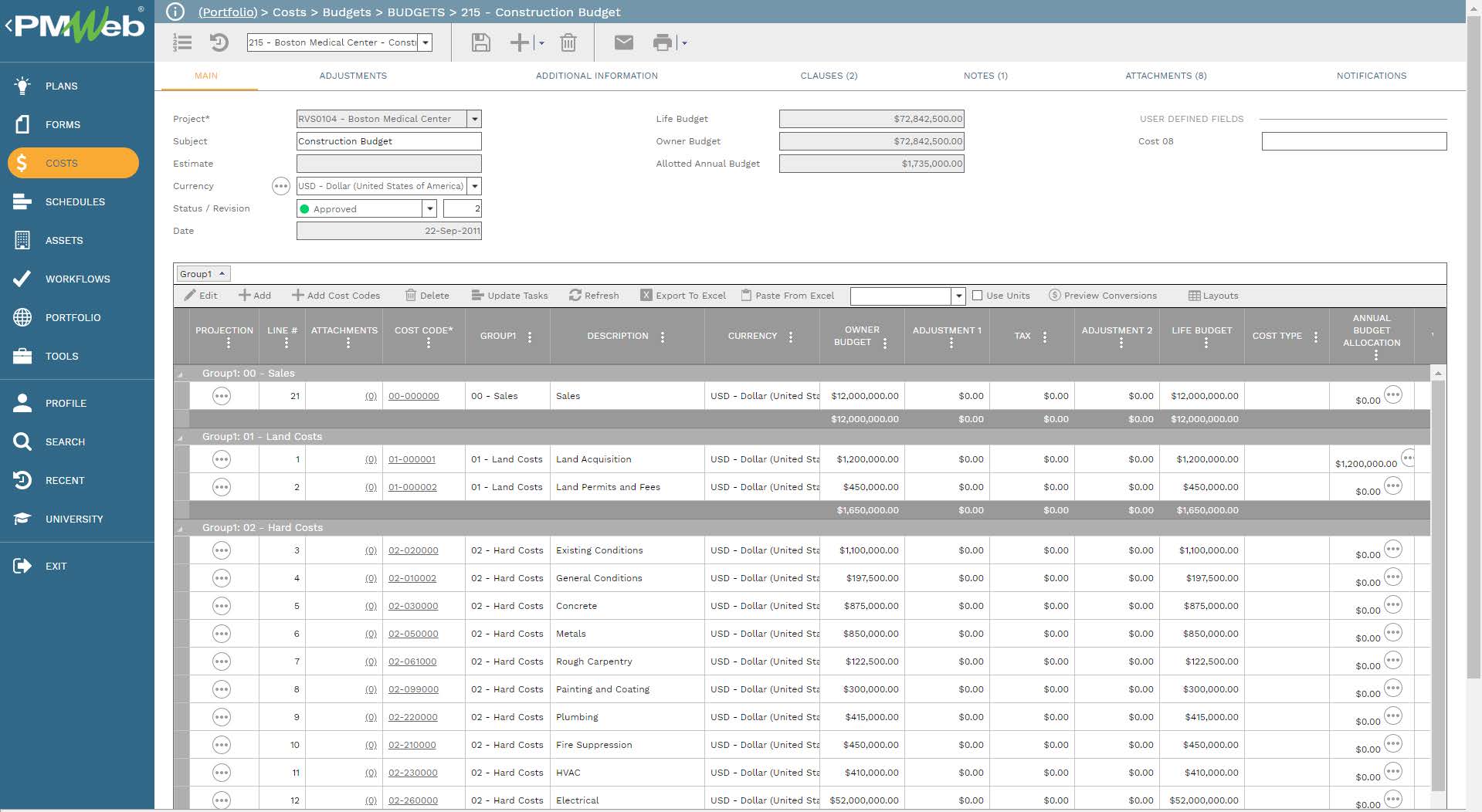
Unlike the Revenue Contract and Cost Estimate templates for which the inflow revenue and outflow cost projection was generated, the cost projection of the baseline budget line items which are at a summarized level needs to have more flexibility in establishing the projection. Therefore, the user can use the budget projection option to define the desired project for each budget line item including those items for indirect cost, overhead, contingency, and profit allowances.
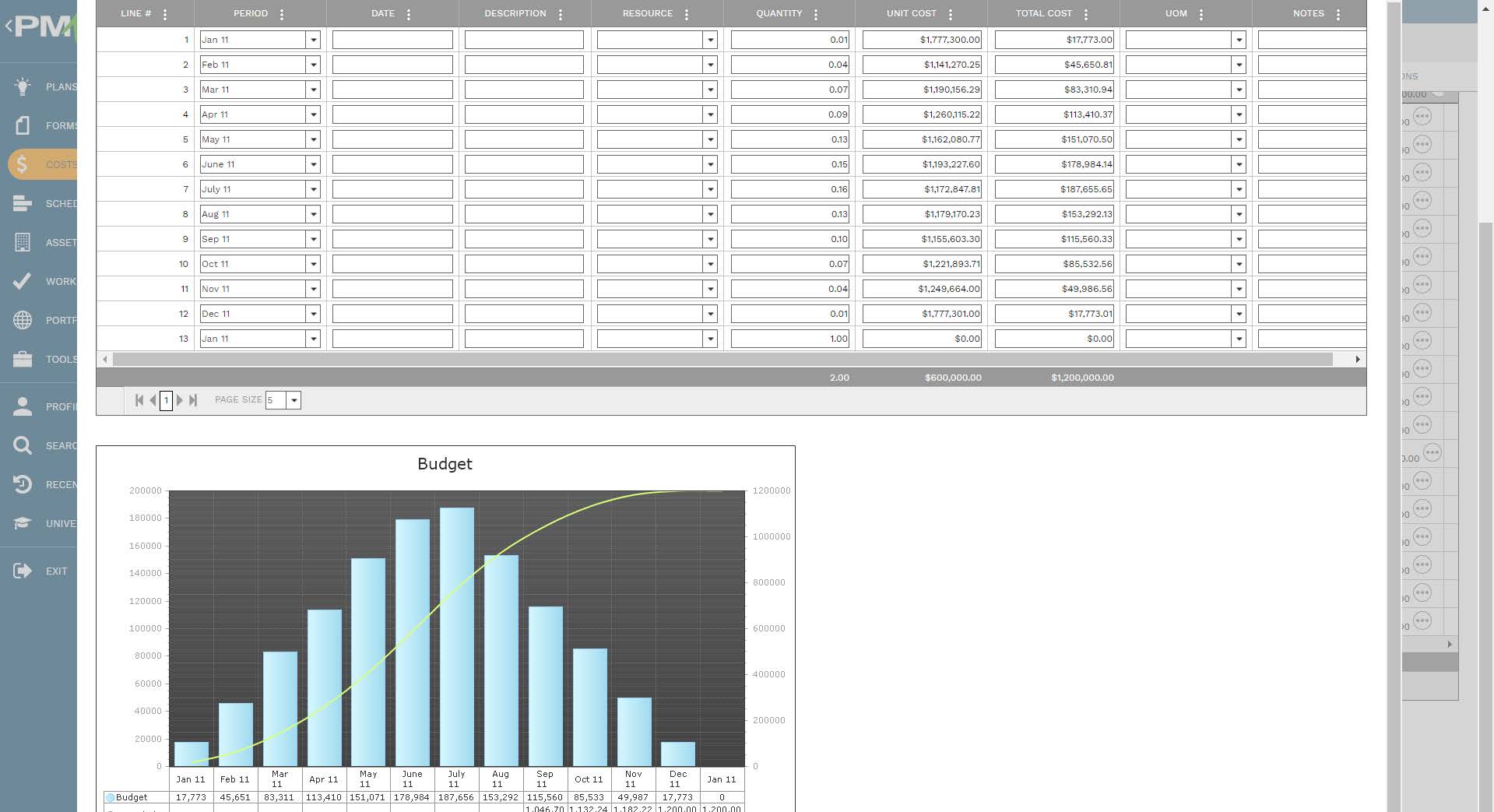
The PMWeb Project Management Information System allows for defining up to 16 levels for the cost breakdown structure. This enables the contractor to implement their desired cost control to the required level of detail. The cost breakdown structure value can be assigned to the line items that are part of the project budget, cost estimate, and revenue contract templates.
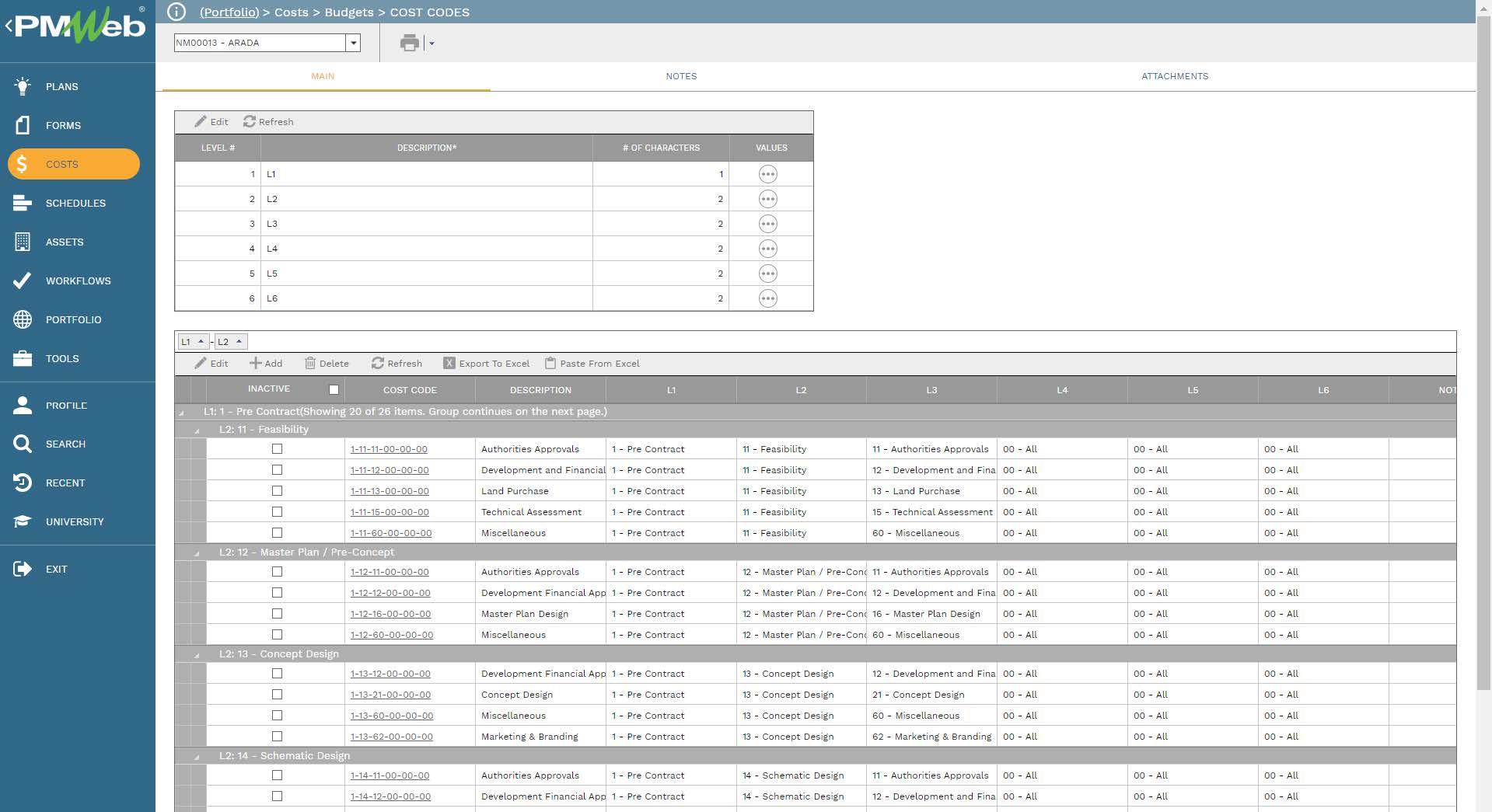
The formal approval of the project’s baseline budget might require having an output report summarizing the budget line items by the cost breakdown structure levels. In addition, a report that details the projected cost of spending the baseline budget. The Anticipated Budget by Month report is one of the 150-plus forms, reports, and dashboards that are available as out-of-the-box reports. Of course, the contractor can create the budget cost projection report in any other desired format and layout.




